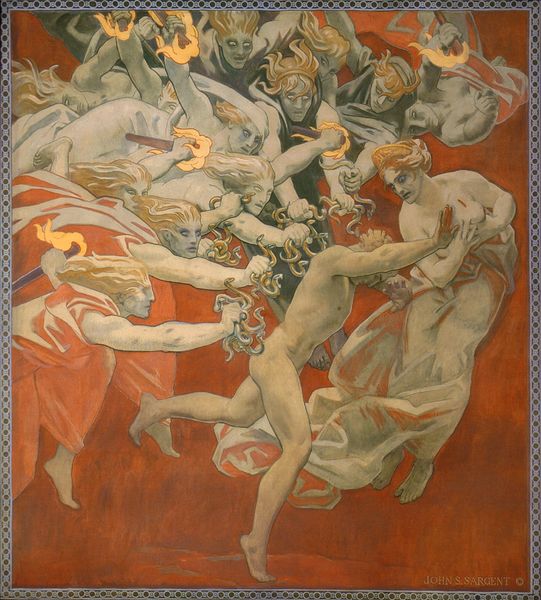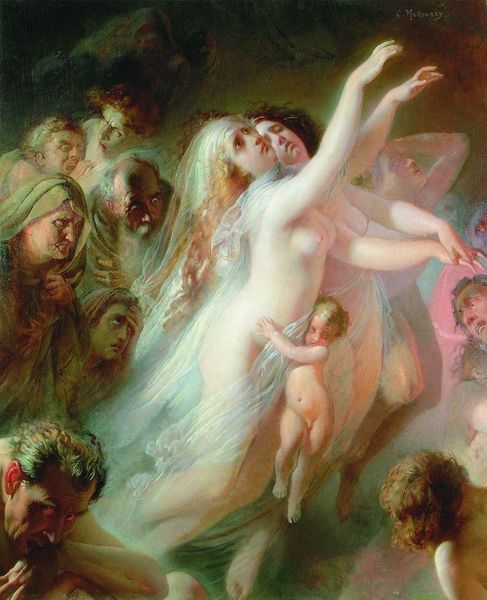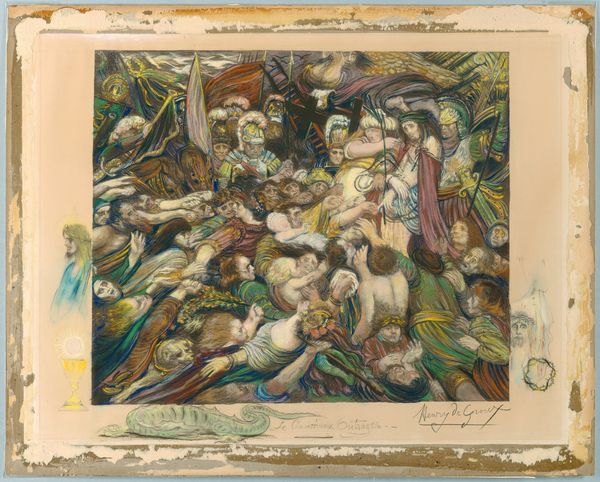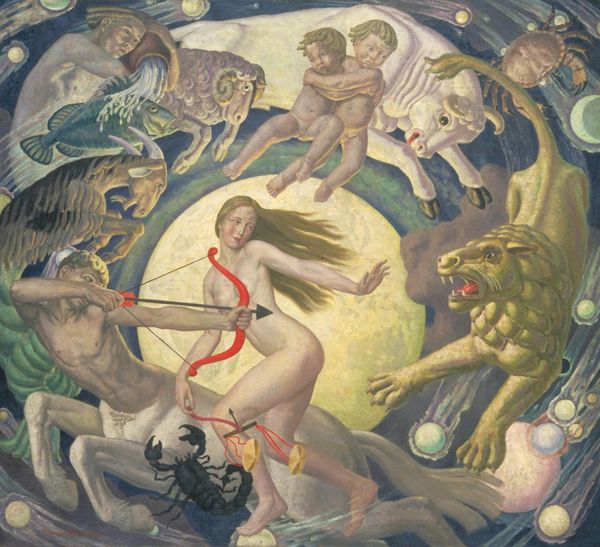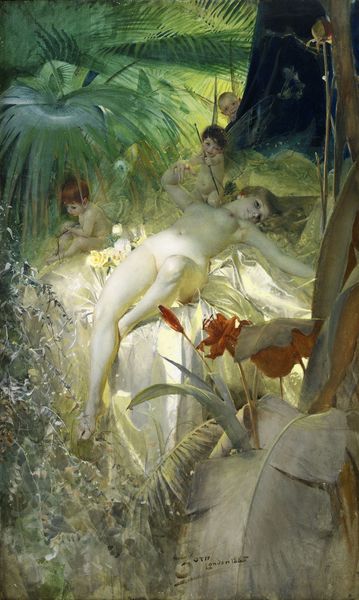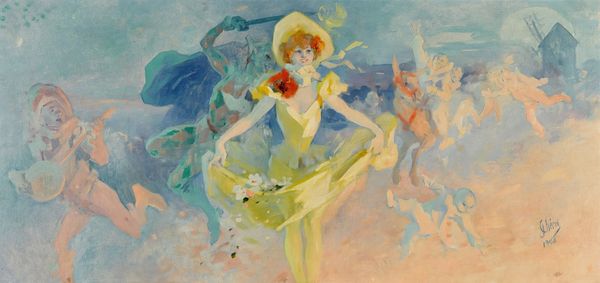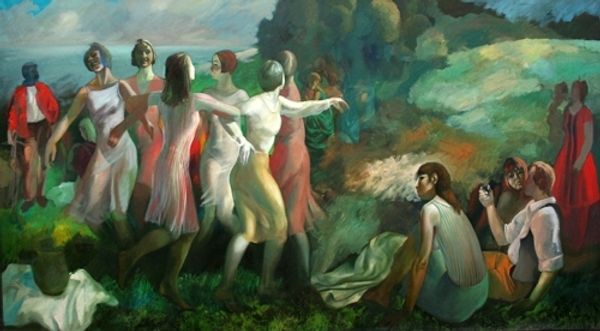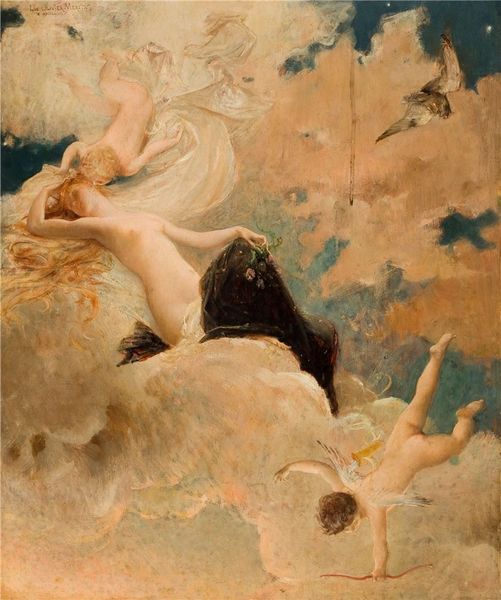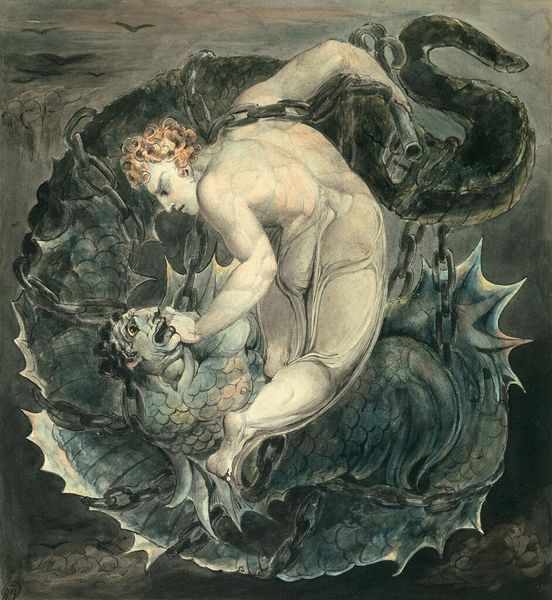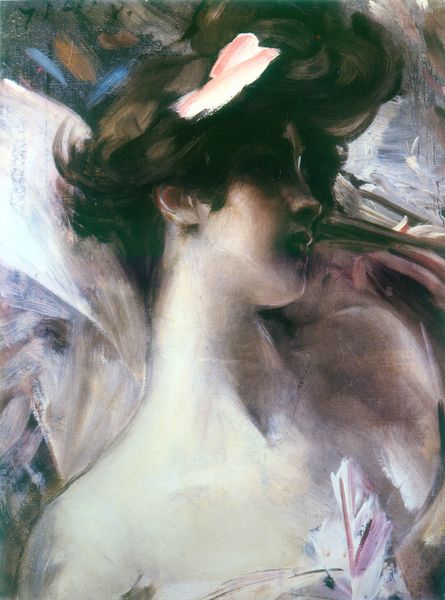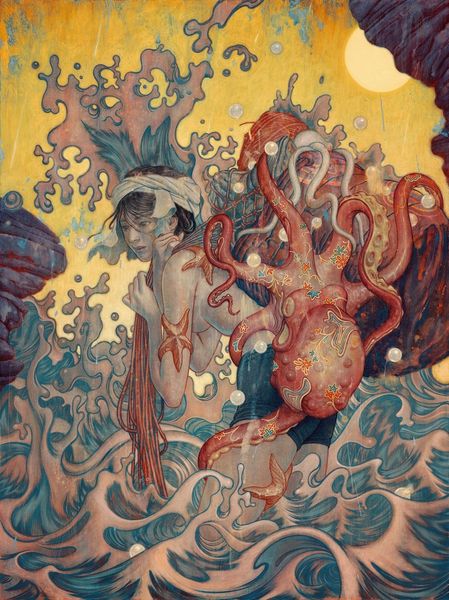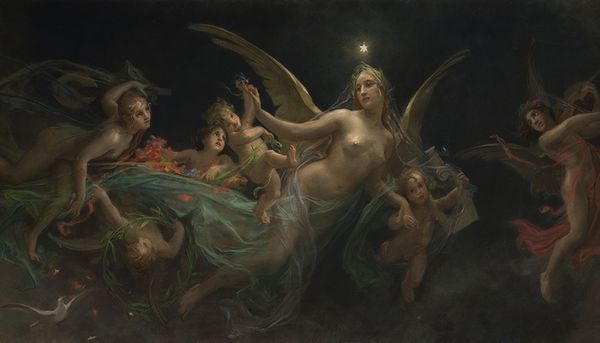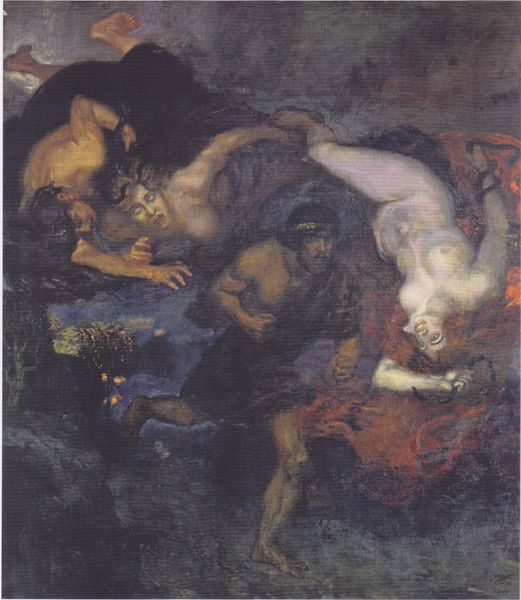
Copyright: Public Domain: Artvee
Editor: This is John Singer Sargent's "Orestes and the Furies," painted around 1920-1921. The swirling figures create such a dynamic, unsettling scene. It's hard to get a sense of the labor involved to create the scene, or even its original setting since it is now just a fragment. What materials did Sargent use, and how did those choices reflect the art world, or his own artistic choices at the time? Curator: Considering the date, just after World War I, the use of oil paint on this scale points towards something monumental. Its location was once the Museum of Fine Arts in Boston; now its history feels fragmented since the scene there no longer exists. Sargent was adapting a narrative from ancient Greek tragedy. Notice the Furies – their bodies are rendered almost as automatons, their limbs angular and grasping. Where did these tools of his profession come from, and to what end? Editor: The rendering of the figures feels very academic. Was this painting created for consumption by an upper class, or meant to speak to something universal about guilt and punishment? Curator: Academic for sure. The history of painting, specifically history painting was traditionally associated with the Academy, which regulated materials and process for art to become considered fine art, thus available for consumption of the cultural elite. The "universal" story is filtered through a very specific, socially determined lens, though. Consider the source of Sargent's pigments – were they readily available, or did certain colors represent privilege? How does the availability of supplies influence production? Editor: It is interesting how material constraints would also have implications in the storytelling of such monumental pieces. This perspective is adding another dimension to how I analyze art! Curator: Precisely. Materiality is never neutral. Understanding the process reveals a deeper understanding of the context and the message itself.
Comments
No comments
Be the first to comment and join the conversation on the ultimate creative platform.
